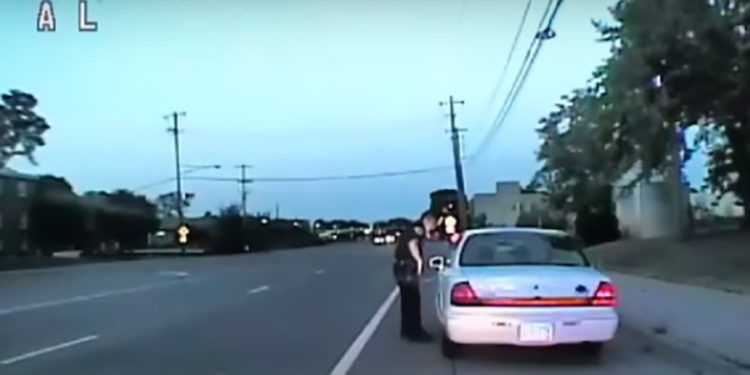
Days after a Minnesota jury acquitted the police officer who fatally wounded 32-year-old Philando Castile during a traffic stop in 2016, officials have released dashcam footage of the incident.
For the first time, we got to witness how the system failed us once more.
Millions have already seen the footage thanks to Castile’s girlfriend, Diamond Reynolds, who was with him at the time of the incident. As the scene unfolded, Reynolds live streamed it via Facebook. But for the first time since the tragedy, authorities are providing an inside look into the moments that led up to Castile’s untimely and unnecessary death.
The newly released video was captured from the camera inside Officer Jeronimo Yanez’s patrol car and is the very footage that jurors saw when deciding his fate. It shows how a very routine conversation about a broken taillight escalated to yet another Black man being killed by police.
During his testimony, Yanez said he feared for his life. But in the video, Castile seemed to be cooperating with the officer’s demands for his insurance and driver’s license and even informed Yanez that he had a firearm, which he was licensed to carry.
Warning: Video contains sensitive material. Viewer discretion is advised.
This is the dashcam video of Jeronimo Yanez killing #PhilandoCastile. There is no way in hell he should be free…. https://t.co/LhwFAsinT8
— rolandsmartin (@rolandsmartin) June 20, 2017
On Friday, Yanez was declared not guilty of second-degree manslaughter in the July 6, 2016 shooting death of Castile. He was also cleared of two counts of intentional discharge of a firearm that endangers safety.
During the two-week trial, prosecutors argued that Yanez was a nervous officer who lost control of his traffic stop. They portrayed him as being too quick to pull the trigger after learning Castile had a gun—one he was legally permitted to carry.
The Yanez jury deliberated for roughly 29 hours before making a decision regarding the officer’s fate.
The footage is shocking, and it leaves many of us wondering how Yanez remains a free man.
What made Yanez conclude that his life was in danger? After all, Castile voluntary informed him that he had a weapon.
What were some of the factors taken into account by jurors when deciding his fate?
Why was Yanez charged under a statute that requires prosecutors to prove he acted with culpable negligence, meaning that he was reckless and acted unreasonably for the situation?
With what feels like open season on Black and Brown bodies in America, verdicts like this one make us wonder if justice will ever truly be served.


